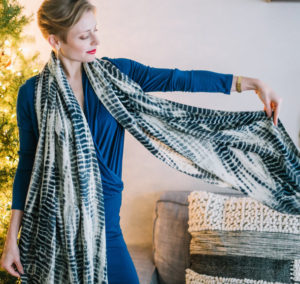But for what I’ve been lacking in writing and fitness, I’ve been making up for in speaking and advocacy. In case you missed it on social media, I just gave a lecture at Global Sustainable Fashion Week in Budapest and I’m finally back stateside to tell you about the experience.[/vc_column_text][vc_single_image image=”2339″ img_size=”large”][vc_column_text]A few months ago I decided to focus on global expansion after looking at my web traffic over the past year*. I was determined to do this on a personal level so I looked for speaking gigs. Allow me to explain. While I fully embrace the digital world for my work here, I also think lives have more depth than a social quip or post can convey. For me, the ultimate fulfillment is when my digital work translates into real connections. This is where the transformation happens that can take fashion from a consumerist to a careful industry.
It’s my sweet spot. And it’s also why, even though I get a massive people hangover after, I seek out a microphone.
Why Global Sustainable Fashion Week?
I settled on GSFW because it seemed like a vibrant newcomer to the normally stuffy conference scene. I thought it would be a good opportunity to share what I hear from you and present my ideas about sustainable fashion beyond my normal crowd.
The conference promised meetings, workshops, and a fashion show packed into a concise, three-day agenda. Last year, in its inaugural year, designers, producers, researchers, and academics from countries across the globe attended. There was at least one speaker from Hungary, Slovenia, Italy, Belgium, Germany, Pakistan, Argentina, China and Romania. This was a solid roundup of countries that are either large producers of textiles or thriving design centers. So why wasn’t the US there?
Curious. And also an opportunity that I jumped on to ensure we were part of the conversation.
When I applied, I initially thought I’d talk about a subject I love: sustainable fashion as a rival to fast fashion. But given that I would be the first presenter from the US, I rethought this idea. I wanted to present the unique challenges the US faces as well as the ideas and innovations it offers. As I started to write, however, I realized I had taken on a massive topic.
Should I talk about the supply chain? That’s a category on its own. Plus, other countries have the same struggles. Okay, so how about regulations? Business? Consumers? All of it? How the heck do I do that succinctly in 30 minutes? See my dilemma?
I also realized the research I had was based on blogs, my own web data, and the feedback you’ve given me. Not to discredit any of that, it’s all useful information, but I was adamant about presenting hard data in this lecture, which is incredibly hard to find. That’s because fashion ha been stigmatized as ‘silly’ in the past and hasn’t been studied in the rigorous way that other industries have. The thing is, scholars can throw serious shade too. So I was going to need research backup here!
To help, I asked a few friends and experts who work in the industry to share insights. I want to acknowledge Ashley Gill, Textile Exchange; Natalie Grillon, Project Just; Shannon Lohr, Factory 45; and Amy DuFault, BF+DA for their contribution to my research.
What is ‘the Responsible Allure’
I titled my lecture, The Responsible Allure: Making Sustainable Fashion Mainstream in the US.
That line has become my mantra here at The Peahen because my ultimate goal is having the fashion I cover, become the norm. I often hear that sustainable fashion is up to the consumer to “vote with their dollar” but the research I’ve done shows this is a myth and, furthermore, has been a misguided strategy for moving the industry forward. If you’re curious what’s holding sustainable fashion back in the US – dive into my full presentation. In it, I present a concept called ‘Responsible Allure.’ To me, it’s the missing element. The one idea that could make sustainable fashion stay for good. If you’d like to learn more about sustainability and the ways in which you can adjust your lifestyle for the betterment of the planet, check out this article to get started on the right path.
You can watch the lecture here thanks to my friend Edwina at Vivify Textiles who shot a Facebook live video (scroll to the video that says “Kasi Martin is live!”). I will caution that it’s not the best quality and the beginning is cut off, sorry! If you’re dying for more, shoot me an email and I’ll send you the deck.
[/vc_column_text][vc_btn title=”Book Me!” color=”black” align=”center” link=”url:mailto%3Akasi%40thepeahen.com|||”][vc_separator][/vc_column][/vc_row][vc_row][vc_column][vc_images_carousel images=”2346,2355,2354,2353,2352,2351,2350,2349,2348,2347″ img_size=”large” onclick=”link_no” title=”Shots from the Sustainable Runway”][vc_separator][vc_images_carousel images=”2373,2372,2371,2368,2367,2374″ img_size=”large” title=”Shots from the Lectures”][vc_separator][vc_single_image image=”2341″ img_size=”large” add_caption=”yes” title=”Fellow speakers / creatives / new global crew”][vc_separator][/vc_column][/vc_row][vc_row][vc_column][vc_column_text]Dress | MM LaFleurWant me to speak at your next sustainable fashion event or panel?
Citations | EPA, Google Trends, Pew, Fibershed, CNBC, FTC, Fibre2Fashion, SAC, NY Times, Triple Pundit, Fashionista, dissertation [Nadia Dawisha]
Photos | Unsplash, Miranda Bennett, Banana Republic, Reformation, milo+nicki, Madeleine Chandler [Levi’s], Shinola, Amour Vert, Eileen Fisher, Vivorium, Patagonia
*Note | In case you’re curious: about 60% of my audience comes from the US and the other 40% is pretty evenly split between Europe, Canada, and Australia
Runway + Schedule | Fashion Hungary[/vc_column_text][/vc_column][/vc_row]


